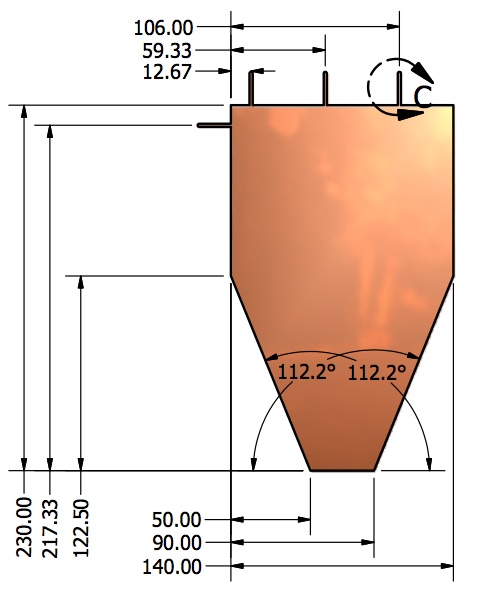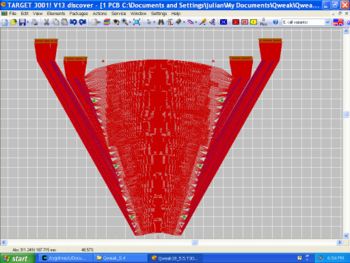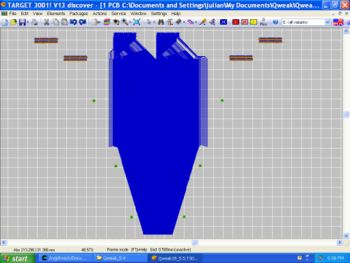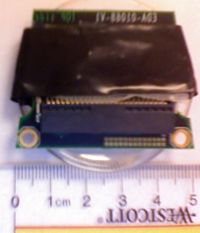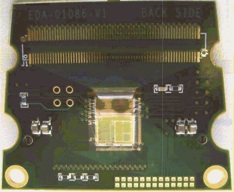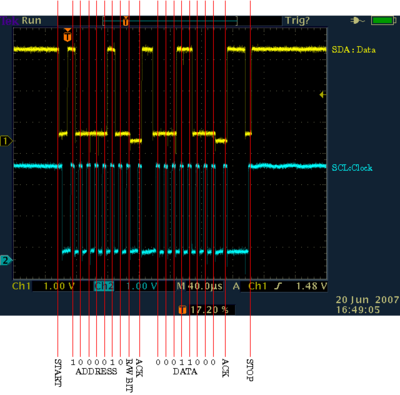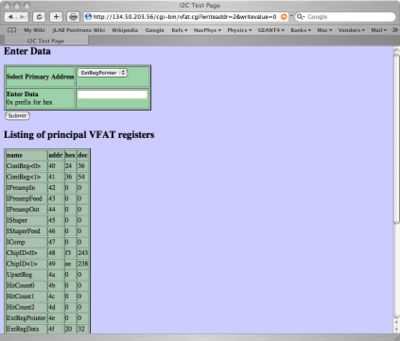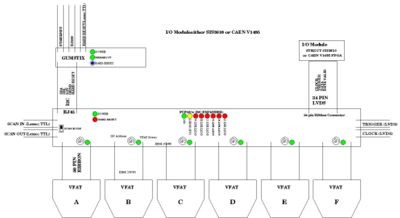Difference between revisions of "Interim Report 5-18-08 AwardNum0653570"
| Line 31: | Line 31: | ||
==== Charge Collector Design and procurement==== | ==== Charge Collector Design and procurement==== | ||
| − | The charge collector for Qweak's region 1 tracking system is shown below. The copper charge collector strips are aligned in terms of the electron scattering angle <math>\theta</math>. The right hand figure | + | The charge collector for Qweak's region 1 tracking system is shown below. The copper charge collector strips are aligned in terms of the electron scattering angle <math>\theta</math>. The right hand figure shows lines of concentric copper strips which will mes |
[[Image:BOTTOM_copper.jpg | 350px]][[Image:TOP_copper.jpg | 350px]] | [[Image:BOTTOM_copper.jpg | 350px]][[Image:TOP_copper.jpg | 350px]] | ||
Revision as of 15:45, 21 June 2008
Participants
Tony Forest Principal Investigator Yes Julian Salamanca Graduate student No Tamar Didberidze Graduate student Yes Jordan Keough Undergraduate student No Jeremy Lebaron Undergraduate student Yes
Activities and Findings
This section will serve as your report to your program officer of your project's activities and findings. Please describe what you have done and what you have learned, broken down into four categories:
Describe the major research and education activities of the project.
Describe the major findings resulting from these activities.
Describe the opportunities for training and development provided by your project.
Describe outreach activities your project has undertaken.
could click "Nothing Yet to report"
What have been your major research and education activities (experiments, observations, simulations,presentations, etc.)
Qweak Ionization Chamber construction
The three major components to the Qweak Region 1 detector are the GEM preamplifiers, the charge collector, and the ionization chamber.
Preamplifier design and procurement
The figure below shows the custom designed GEM preamplifier for the Qweak Region 1 tracking system. The preamplifier is a 50 micron thick kapton foil clad on both sides with 5 microns of copper. Holes are etched into the foil such that a voltage applied across the upper and lower copper plates will create an electric field strong enough to cause charge to pass through the hole and multiply but like the avalanche region of a drift chamber. Enigneers from the Idaho Accelerator center designed the shape of the foils and the location of 6 tabs used for HV connections. This generic design allows one to use the part for any GEM amplification stage simply by cutting off the unused HV tabs. Although this is a simple part, it is a clear example of how the infrastructure at the IAC can be leveraged in support of our physics mission.
Charge Collector Design and procurement
The charge collector for Qweak's region 1 tracking system is shown below. The copper charge collector strips are aligned in terms of the electron scattering angle . The right hand figure shows lines of concentric copper strips which will mes
Ionization Chamber design
Qweak readout electronics
VFAT board
I2C communication
Readout switchyard
R3 tests
What are your major findings from the activities identified above
Qweak readout electronics
Spead test results
VFAT communication protocols
Publications and Products
In this section, you will be asked to describe the tangible products coming out of your project. Specifically:
What have you published as a result of this work? Journal publications
Books or other non-periodical, one-time publications
What Web site or other Internet site have you created?
What other specific products (databases, physical collections, educational aids, software, instruments, or the like) have you developed?
What have you published as a result of this work?
Journal publications
Books or other non-periodical, one-time publications
What Web site or other Internet site have you created?
Wiki
What other specific products (databases, physical collections, educational aids, software, instruments, or the like) have you developed?
Contributions
Now we invite you to explain ways in which your work, your findings, and specific products of your project are significant. Describe the unique contributions, major accomplishments, innovations and successes of your project relative to :
the principal discipline(s) of the project;
other disciplines of science or engineering;
the development of human resources;
the physical, institutional, or information resources that form the infrastructure for research and education; and
other aspects of public welfare beyond science and engineering, such as commercial technology, the economy, cost-efficient environmental protection, or solutions to social problems.
